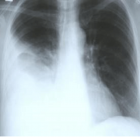Abstract
Research Article
Explicating the presentations of Acanthamoeba keratitis with special concern in the COVID-19 pandemic ambient
Chrysanthus Chukwuma Sr*
Published: 18 March, 2021 | Volume 4 - Issue 1 | Pages: 010-015
This article presents an overview of information regarding Acanthamoeba keratitis per epidemiology, host-pathogen interactions, clinical manifestations, risk factors, environmental implications, diagnosis, treatment and management as well as COVID-19 characteristics which may be taken into cognizance for suspected infected patients, researchers and ophthalmologic practitioners. Acanthamoeba spp. is pathogenetically ubiquitous in nature. Acanthamoeba keratitis is considerably an ocular-threatening and debilitating keratitis that exhibits contumacious characteristics which hinder or impede treatment or management. At inception, Acanthamoeba generally depicts atypical clinical features which are frequently misdiagnosed as other microbial keratitis. Fundamentally, it constitutes a rare corneal infection of which the aetiologic agent is the protozoon Acanthamoeba spp. in contact lens wearers, presenting features of severe ophthalmic distress, blurred vision, blepharospasm, ocular excoriation, extraneous entity sensation and photophobia culminating in aberrant visual functionality. These are perspicuously due to retarded prompt and adequate treatment and management. Personal and environmental hygiene, especially on the hands, face and ocular areas as advised for the COVID-19 protocol could prevent contamination and dissemination of Acanthamoeba keratitis infection. The differentiating relatedness of Acanthamoeba keratitis, COVID-19 ophthalmologic infections and other ocular problems may not have been clearly elucidated.
Read Full Article HTML DOI: 10.29328/journal.ijcmbt.1001020 Cite this Article Read Full Article PDF
Keywords:
Emerging and reemerging infectious disease; Prevention; Hygiene; Diagnosis; Evaluation; Microbial keratitis; COVID-19
References
- Merritt J, Hogan RN. Bilateral Acanthamoeba panophthalmitis: A rare and unique case. Am J Ophthalmol Case Rep. 2020.
- Chukwuma Sr C. Comments on the environmental health implications of Acanthamoeba. Int J Env Hlth Res. 1996; 6: 49-54.
- Chukwuma Sr C. Information and communication needs in the administration of ibuprofen of symptoms in COVID-19 patients. J Med Res. 2020; 6: 128-130.
- Chukwuma Sr C. Ecological analysis of the COVID-19 pandemic for restoration and sustainability. Res Adv Pharm Life Sci. 2021; 3: 8-12.
- Maycock NJ, Jayaswal R. Update on Acanthamoeba keratitis: Diagnosis, treatment and outcomes. Cornea. 2016; 35: 713-720. PubMed: https://pubmed.ncbi.nlm.nih.gov/26989955/
- Somani S, Ranquillo Y (Moshirfar M ed.). Acanthamoeba Keratitis Article. 2021. PubMed: https://www.statpearls.com/ArticleLibrary/viewarticle/81120
- Kim JH, Matin A, Shin HJ, Park H, Yoo KT, et al. Functional roles of mannose-binding protein in the adhesion, cytotoxicity and phagocytosis of Acanthamoeba castenani. Exp Parasitol. 2012; 32: 287-292. PubMed: https://pubmed.ncbi.nlm.nih.gov/22940016/
- Szentmary N, Daas L, Shi L, Laurik KC, Lepper S, et al. Acanthamoeba keratitis - Clinical signs, differential diagnosis and treatment. J Curr Ophthalmol. 2019; 31: 16–23. PubMed: https://www.ncbi.nlm.nih.gov/pmc/articles/PMC6407156/
- Garg P, Kalra P, Joseph J. Non-contact lens related Acanthamoeba keratitis. Int J Ophthalmol. 2017; 65: 1079–1086. PubMed: https://www.ncbi.nlm.nih.gov/pmc/articles/PMC5700572/
- Chukwuma, Sr, C. Microsporidium in AIDS and HIV-infected patients: A perspective. East Afri Med J. 1996; 73: 72-75.
- Khurana S, Sharma M. Parasitic keratitis - An under-reported entity. Trop Parasitol. 2020; 10: 12-17. PubMed: https://pubmed.ncbi.nlm.nih.gov/32775286/
- de Lacerda AG, Lira M. Acanthamoeba keratitis: a review of biology,pathophysiology and epidemiology. Ophthalmic and Physiologic Optics. 2020; 41: 116-135. PubMed: https://pubmed.ncbi.nlm.nih.gov/33119189/
- Carnt N, Stapleton F. Strategies for the prevention of contact lens-related Acanthamoeba keratitis: a review. Ophtalmic and Physiol Optics. 2015; 36: 77-92. PubMed: https://pubmed.ncbi.nlm.nih.gov/26691018/
- Chkheidze R, Evers B, Cavuoti D, Merritt J, Hogan RN. Bilateral Acanthamoeba panophthalmitis: A rare and unique case. Amer J Ophthalmol Case Rep. 2020; 20: 100970. PubMed: https://pubmed.ncbi.nlm.nih.gov/33117918/
- Sen M, Honavar SG, Sharma N, Sachdev MS. COVID-19 eye: A review of ophthalmic manifestations of COVID-19. Ind J Ophtalmol. 2021; 69: 488-509. PubMed: https://pubmed.ncbi.nlm.nih.gov/33595463/
- Jones L, Walsh K, Willcox M, Morgan P, Nichols J. The COVID-19 pandemic: important considerations for contact lens practitioners. Cont Lens Anterior Eye. 2020; 43: 196-203. PubMed: https://pubmed.ncbi.nlm.nih.gov/32273245/
- Miller G. Researchers are tracking another pandemic, too - of coronavirus misinformation. Science. 2020.
- Seah I, Agrawal R. Can the coronavirus disease 2019 (COVID-19) affect the eyes? A review of coronaviruses and ocular implications in humans and animals. Ocul Immunol Inflamm 2020; 8: 391-395. PubMed: https://pubmed.ncbi.nlm.nih.gov/32175797/
- Kumar KK, Sampritha UC, Prakash AA, Adappa K, Chandraprabha S, et al. Ophthalmic manifestations in the COVID-19 clinical spectrum. Ind J Ophthalmol 2021; 69: 691-694. PubMed: https://pubmed.ncbi.nlm.nih.gov/33595502/
- Kinota S, Wong KW, Biswas J, Rao NA. Changing patterns of infectious keratitis: overview of clinical and histopathologic features of keratitis due to Acanthamoeba or atypical mycobacteria, and of infectious crystalline keratopathy. Indian J Ophthalmol. 1993; 41: 3-14. PubMed: https://pubmed.ncbi.nlm.nih.gov/8225521/
- Volkov VV, Zabaikina TP, Liu L, Astakhov ST, Gordeeva LM. Acanthamoeba keratitis (literature review and case report) (in Russian) Vestnik Oftalmologii. 1994; 110: 28-31.
- Dart Jk, Saw VP, Kilvington S. Acanthamoeba keratitis: diagnosis and treatment update 2009. Amer J Ophthalmol. 2009; 148: P487-499. E2. PubMed: https://pubmed.ncbi.nlm.nih.gov/19660733/
- Alkharashi M, Lindsley K, Law HA, Sikder S. Medical interventions for acanthamoeba keratitis. The Cochrane database of systematic reviews. 2015: CD010792. PubMed: https://pubmed.ncbi.nlm.nih.gov/25710134/
- Martinez AJ. Free-living amebas: infection of the central nervous system. Mount Sinai J Med. 1993; 60: 271-278. PubMed: https://pubmed.ncbi.nlm.nih.gov/8232369/
- Malet F, Hasle D, Flohic AM, Colin J. Superficial amebic keratitis (in French). J Francais d'Ophtalmol. 1993; 16: 165-169. PubMed: https://www.ncbi.nlm.nih.gov/pubmed/8496566
- Auran JD, Starr MB, Koester CJ, LaBombardi VJ. In vivo scanning slit confocal microscopy of Acanthamoeba keratitis. A case report. Cornea. 1994; 13: 183-185. PubMed: https://pubmed.ncbi.nlm.nih.gov/8156791/
- Nakagawa H, Kazami N, Izai K, Iwasaki M, Uchica Y, et al. Two cases of early Acanthamoeba keratitis (in Japanese). Nippon Ganka Gakkai Zasshi - Acta Societ Ophthalmol. Japon. 1993; 97; 544-50. PubMed: https://pubmed.ncbi.nlm.nih.gov/8317377/
- Bacon AS, Frazer DG, Dart JK, Matheson M, Ficker LA, et al. Acanthamoeba keratitis. The value of early diagnosis. Ophthalmology. 1993; 100: 1238-1243. PubMed: https://pubmed.ncbi.nlm.nih.gov/8341508/
- Wang L, Asem EK, McLaughlin GL. Calcium enhances Acanthamoeba polyphaga binding to extracellular matrix proteins. Invest Ophthalmol Visual Sci. 1994; 35: 2421-2426. PubMed: https://pubmed.ncbi.nlm.nih.gov/8163332/
- Gordon VR, Asem EK, Vodkin MH, McLaughlin GL. Acanthamoeba binds to extracellular matrix proteins in vitro. Ophthalmol Visual Sci. 1993; 34: 658-662. PubMed: https://pubmed.ncbi.nlm.nih.gov/8449684/
- Kilvington S. Acanthamoeba trophozoite and cyst adherence to four types of soft contact lens and removal by cleaning agents. Eye. 1993; 7: 535-538. PubMed: https://pubmed.ncbi.nlm.nih.gov/8253233/
- Van Klink F, Alizadeh H, He Y, Mellon JA, Silvany RF, et al. The role of contact lenses, trauma and Langerhans cells in a Chinese hamster model of Acanthamoeba keratitis. Invest Ophthalmol Visual Sci. 1993; 34: 1937-1944. PubMed: https://pubmed.ncbi.nlm.nih.gov/8491547/
- Volkov VV, Gordeva LM, Kaminskaia LIu, Zabaikina TP, Siu A. The diagnosis of Acanthamoeba keratitis. The identification of the first case in Russia (in Russian). Med Parazitol. Parazita. Bol. 1993; 5: 60-63. PubMed: https://pubmed.ncbi.nlm.nih.gov/8127276/
- Gautom RK, Lory S, Seyedirashthi S, Bergeron DL, Fritsche TR. Mitochondrial DNA fingerprinting of Acanthamoeba spp. isolated from clinical and environmental sources. J Clin Microbiol. 1994; 32: 1070-1073. PubMed: https://pubmed.ncbi.nlm.nih.gov/7913095/
- Karsenti N, Lau R, Purssell A, Chong-Kit, Cunanam M, et al. Development and validation of a real-time PCR assay for the detection of clinical amoebae. BMC Res Notes. 2017; 10: 355. PubMed: https://pubmed.ncbi.nlm.nih.gov/28754142/
- Gardner A. Pathogenesis of Acanthamoebic keratitis: hypothesis based on a histological analysis of 30 cases. Br J Ophtalmol. 1993; 77: 366-370. PubMed: https://www.ncbi.nlm.nih.gov/pmc/articles/PMC504533/
- Kremer J, Cohen EJ, Eagle RC Jr, Udell I, Laibson PR. Histopathologic evaluation of stromal inflammation in Acanthamoeba keratitis. CLAO J. 1994; 20: 45-48. PubMed: https://pubmed.ncbi.nlm.nih.gov/8149574/
- Gieryng R, Prost M, Gieryng H, Mazur T, Kasprzak W. Amebic keratitis-keratitis Acanthamoeba (in Polish) Klinika Oczna. 1994; 96: 163-167. PubMed: https://www.ncbi.nlm.nih.gov/pubmed/7990337
- Pogson C. Acanthamoeba keratitis. J Opthalmol Nurs Tech. 1993; 12: 114-116. PubMed: https://pubmed.ncbi.nlm.nih.gov/8158668/
- Varga JH, Wolf TC, Jensen HG, Parmley VC, Rowsey JJ. Combined treatment of Acanthamoeba keratitis with propamidine, neomycin, and polyhexamethylene biguanide. Am J Ophthalmol. 1993; 115: 466-470. PubMed: https://pubmed.ncbi.nlm.nih.gov/8470718/
- Tay-Kearney ML, McGhee CM, Crawford GJ, Trown K. Acanthamoeba keratitis. A masquerade of presentation in six cases. Aust NZJ Ophthalmol. 1993; 21: 237-245. PubMed: https://pubmed.ncbi.nlm.nih.gov/8148140/
- Brasseur G, Favennec L, Perrine D, Chenu JP, Brasseur P. Successful treatment of Acanthamoeba keratitis by hexamidine. Cornea. 1993; 13: 459-462. PubMed: https://pubmed.ncbi.nlm.nih.gov/7995072/
- Seal DV, Hay J, Kirkness CM. Chlorhexidine or polyhexamethylene biguanide for Acanthamoeba keratitis. Lancet. 1995; 345: 136. PubMed: https://pubmed.ncbi.nlm.nih.gov/7815880/
- Dougherty PJ, Binder PS, Mondino BJ, Glasgow BJ. Acanthamoeba sclerokeratitis. Am J Ophthalmol. 1994; 117: 475-479. PubMed: https://pubmed.ncbi.nlm.nih.gov/8154529/
- Nilsson SEM, Montan PG. The hospitalized cases of contact lens induced keratitis in Sweden and their relation to lens type and wear schedule: results of a three-year retrospective study. CLAO J. 1994; 20: 97-101. PubMed: https://pubmed.ncbi.nlm.nih.gov/8044983/
- Panjwani N. Pathogenesis of acanthamoeba keratitis. Ocul Surf. 2010; 8: 70-79. PubMed: https://pubmed.ncbi.nlm.nih.gov/20427010/
- Carnt N, Hoffman JJ, Verma S, Hau S, Radford CF, et al. Acanthamoeba keratitis: confirmation of the UK outbreak and a prospective case-control study identifying contributing risk factors. Brit J Ophthalmol. 2018; 102: 1621-1628. PubMed: https://pubmed.ncbi.nlm.nih.gov/30232172/
- Tananuvat N, Techajongjintana N, Somboon P, Wannasan A. The First Acanthamoeba Keratitis case of non-contact lens wearer with HIV infection in Thailand. Case Report. The Korean J Parasitol. 2019; 57: 505-511. PubMed: https://pubmed.ncbi.nlm.nih.gov/31715691/
- Chukwuma Sr C. The clinicopathological correlates of cystoisosporiasis in immunocompetent, immunocompromised and HIV-infected/AIDS patients, but neglected in SARS-COV-2/COVID-19 patients? Int J Clin Microbiol Biochem Technol. 2021; 4: 001-004.https://www.heighpubs.org/hcmbt/pdf/ijcmbt-aid1018.pdf
Similar Articles
-
Host biomarkers for early diagnosis of infectious diseases: A comprehensive reviewArindam Chakraborty*,Singh Monica. Host biomarkers for early diagnosis of infectious diseases: A comprehensive review. . 2019 doi: 10.29328/journal.ijcmbt.1001005; 2: 001-007
-
Knowledge, perception and practices of Suez Canal University students regarding Hepatitis C Virus infection risk and means of preventionNermine Elmaraghy*,Hesham El-Sayed,Sohair Mehanna,Adel Hassan,Mahmoud Sheded,Maha Abdel-Fattah,Samar Elfiky,Nehal Lotfy,Zeinab Khadr. Knowledge, perception and practices of Suez Canal University students regarding Hepatitis C Virus infection risk and means of prevention. . 2019 doi: 10.29328/journal.ijcmbt.1001007; 2: 020-027
-
Production and evaluation of enzyme-modified lighvan cheese using different levels of commercial enzymesMohammad B Habibi Najafi*,Mohammad Amin Miri. Production and evaluation of enzyme-modified lighvan cheese using different levels of commercial enzymes. . 2020 doi: 10.29328/journal.ijcmbt.1001009; 3: 011-016
-
Estimating global case fatality rate of coronavirus disease 2019 (COVID-19) pandemicShyamapada Mandal*,Manisha Mandal. Estimating global case fatality rate of coronavirus disease 2019 (COVID-19) pandemic. . 2020 doi: 10.29328/journal.ijcmbt.1001014; 3: 036-039
-
The clinicopathological correlates of Cystoisosporiasis in immunocompetent, immunocompromised and HIV-infected/AIDS patients, but neglected in SARS-COV-2/COVID-19 patients?Chrysanthus Chukwuma Sr*. The clinicopathological correlates of Cystoisosporiasis in immunocompetent, immunocompromised and HIV-infected/AIDS patients, but neglected in SARS-COV-2/COVID-19 patients?. . 2021 doi: 10.29328/journal.ijcmbt.1001018; 4: 001-004
-
Explicating the presentations of Acanthamoeba keratitis with special concern in the COVID-19 pandemic ambientChrysanthus Chukwuma Sr*. Explicating the presentations of Acanthamoeba keratitis with special concern in the COVID-19 pandemic ambient. . 2021 doi: 10.29328/journal.ijcmbt.1001020; 4: 010-015
-
Coronavirus COVID-19 surface properties: Electrical charges statusLuisetto M*,Tarro G,Khaled Edbey,Farhan Ahmad Khan,Yesvi AR,Nili BA,Fiazza C,Mashori GR,President, IMA Academy, Italy. Coronavirus COVID-19 surface properties: Electrical charges status. . 2021 doi: 10.29328/journal.ijcmbt.1001021; 4: 016-027
-
Comparative Evaluation of the Effectiveness of Methods for the Treatment of Surgical Soft Tissue InfectionAO Okhunov*. Comparative Evaluation of the Effectiveness of Methods for the Treatment of Surgical Soft Tissue Infection. . 2023 doi: 10.29328/journal.ijcmbt.1001027; 6: 005-011
-
The Bacteriological Profile of Nosocomial Infections at the Army Central Hospital of BrazzavilleMedard Amona*,Yolande Voumbo Matoumona Mavoungou,Hama Nemet Ondzotto,Benjamin Kokolo,Armel Itoua,Gilius Axel Aloumba,Pascal Ibata. The Bacteriological Profile of Nosocomial Infections at the Army Central Hospital of Brazzaville. . 2025 doi: 10.29328/journal.ijcmbt.1001032; 8: 009-022
Recently Viewed
-
Metabolic syndrome: A case reportDragan Klaric,Marta Martinis*,Marta Klaric. Metabolic syndrome: A case report. Ann Clin Endocrinol Metabol. 2021: doi: 10.29328/journal.acem.1001022; 5: 031-035
-
Hypercalcaemic Crisis Associated with Hyperthyroidism: A Rare and Challenging PresentationKarthik Baburaj*, Priya Thottiyil Nair, Abeed Hussain, Vimal MV. Hypercalcaemic Crisis Associated with Hyperthyroidism: A Rare and Challenging Presentation. Ann Clin Endocrinol Metabol. 2024: doi: 10.29328/journal.acem.1001029; 8: 001-003
-
Evaluation of novel culture media prepared from plant substrates for isolation and identification of Cryptococcus Neoformans Species ComplexEllabib M*,Krema ZA,Mokthar ES,El Magrahi HS,Eshwika A,Cogliati M. Evaluation of novel culture media prepared from plant substrates for isolation and identification of Cryptococcus Neoformans Species Complex. Int J Clin Microbiol Biochem Technol. 2018: doi: 10.29328/journal.ijcmbt.1001002; 1: 009-013
-
A Review on filaricidal activity of phytochemical extracts against filariasis and the Parasites Genomic DiversityAM Gumel*,MM Dogara. A Review on filaricidal activity of phytochemical extracts against filariasis and the Parasites Genomic Diversity. Int J Clin Microbiol Biochem Technol. 2018: doi: 10.29328/journal.ijcmbt.1001004; 1: 024-032
-
Trends of Antibiotic Resistance among Uropathogens in Medical vs. Non-Medical Departments of Al-Shifa Medical Complex in Gaza Strip: A Retrospective, Cross-Sectional StudyKhaled Alkhodari*, Yasmin Al-Shurafa, Hammam AL-louh, Rafat Lubbad. Trends of Antibiotic Resistance among Uropathogens in Medical vs. Non-Medical Departments of Al-Shifa Medical Complex in Gaza Strip: A Retrospective, Cross-Sectional Study. Int J Clin Microbiol Biochem Technol. 2024: doi: 10.29328/journal.ijcmbt.1001028; 7: 001-005
Most Viewed
-
Impact of Latex Sensitization on Asthma and Rhinitis Progression: A Study at Abidjan-Cocody University Hospital - Côte d’Ivoire (Progression of Asthma and Rhinitis related to Latex Sensitization)Dasse Sery Romuald*, KL Siransy, N Koffi, RO Yeboah, EK Nguessan, HA Adou, VP Goran-Kouacou, AU Assi, JY Seri, S Moussa, D Oura, CL Memel, H Koya, E Atoukoula. Impact of Latex Sensitization on Asthma and Rhinitis Progression: A Study at Abidjan-Cocody University Hospital - Côte d’Ivoire (Progression of Asthma and Rhinitis related to Latex Sensitization). Arch Asthma Allergy Immunol. 2024 doi: 10.29328/journal.aaai.1001035; 8: 007-012
-
Causal Link between Human Blood Metabolites and Asthma: An Investigation Using Mendelian RandomizationYong-Qing Zhu, Xiao-Yan Meng, Jing-Hua Yang*. Causal Link between Human Blood Metabolites and Asthma: An Investigation Using Mendelian Randomization. Arch Asthma Allergy Immunol. 2023 doi: 10.29328/journal.aaai.1001032; 7: 012-022
-
An algorithm to safely manage oral food challenge in an office-based setting for children with multiple food allergiesNathalie Cottel,Aïcha Dieme,Véronique Orcel,Yannick Chantran,Mélisande Bourgoin-Heck,Jocelyne Just. An algorithm to safely manage oral food challenge in an office-based setting for children with multiple food allergies. Arch Asthma Allergy Immunol. 2021 doi: 10.29328/journal.aaai.1001027; 5: 030-037
-
Snow white: an allergic girl?Oreste Vittore Brenna*. Snow white: an allergic girl?. Arch Asthma Allergy Immunol. 2022 doi: 10.29328/journal.aaai.1001029; 6: 001-002
-
Cytokine intoxication as a model of cell apoptosis and predict of schizophrenia - like affective disordersElena Viktorovna Drozdova*. Cytokine intoxication as a model of cell apoptosis and predict of schizophrenia - like affective disorders. Arch Asthma Allergy Immunol. 2021 doi: 10.29328/journal.aaai.1001028; 5: 038-040

If you are already a member of our network and need to keep track of any developments regarding a question you have already submitted, click "take me to my Query."















































































































































